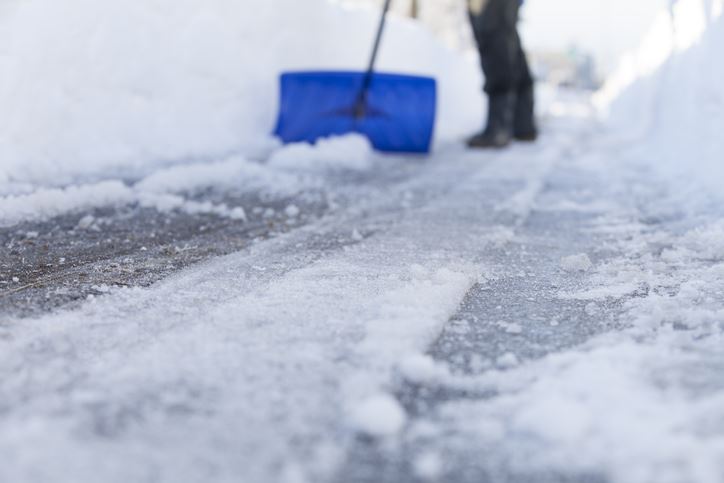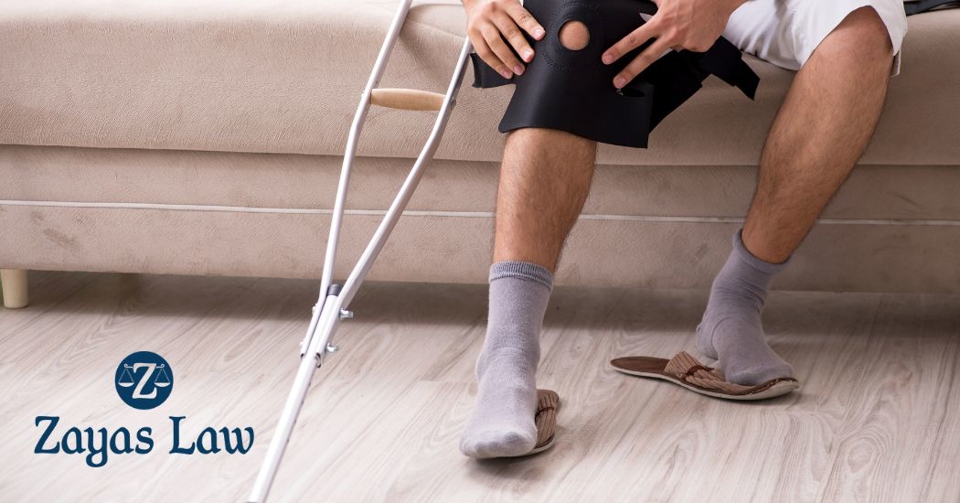Winter brings with it a host of joys like snowball fights, cozy fireplaces, and hot chocolate. However, it also introduces some risks, including slips and falls on icy surfaces. These incidents can lead to a range of injuries, which we will discuss in further detail below.
Common Injuries from Slipping on Ice
Slipping on ice can cause a variety of injuries, with some being more common than others. Some of these injuries include:
- Back and spinal cord injuries. These can result from the impact of the fall or from twisting during the fall. Such injuries can be life-altering, causing chronic pain or even paralysis. Prevention: Core-strengthening exercises can help improve stability and reduce the risk of falls. Also, learn how to fall correctly by rolling and trying to distribute the impact.
- Cuts and abrasions. These are generally less serious but can lead to infection if not treated properly. People with certain conditions like diabetes need to be especially careful as they may have slower wound healing. Prevention: Wearing appropriate winter clothing can provide some protection against cuts and abrasions.
- Fractures. Bones can break during a fall, especially in older people who may have weaker bones due to osteoporosis. The wrists, arms, and hips are particularly vulnerable. Fractures can be severe, requiring surgery and lengthy rehabilitation. Prevention: In addition to wearing suitable footwear, incorporating tools such as canes or walkers can enhance stability. Consistent monitoring of bone density can assist in the early detection of osteoporosis.
- Head injuries. Falls can lead to concussions or other traumatic brain injuries if the head hits the ground or another object. These can be extremely serious, especially for individuals with pre-existing neurological conditions. Prevention: Always try to protect your head during a fall. Helmets can be worn for high-risk activities like ice skating or skiing.
- Sprains and strains. These are often the most common injuries resulting from a slip and fall. They occur when the ligaments, muscles, or tendons are stretched beyond their normal range of motion. The severity can vary from mild to severe, potentially requiring surgery in the worst cases. Older people and those with pre-existing musculoskeletal conditions may be particularly prone to these injuries. Prevention: Wear shoes with good traction and take smaller steps when walking on icy surfaces. Incorporating regular physical activity into your routine can also enhance balance and strength, thereby lowering the likelihood of falling accidents.
Risk Factors
Certain factors can increase your risk of sustaining an injury from slipping on ice. These include your age, with older adults being more susceptible to fractures, especially hip fractures. The level of your physical fitness also contributes to this; individuals who aren't as physically active may have weaker muscles and balance, increasing their risk of falling.
How to Fall Correctly
It may seem weird to say you should fall in the correct way. However, if you slip and are unable to keep from falling, you should be aware of how to safely navigate falling:
- Relax your body. Our instinctive reaction to falling is to tense up. However, doing so increases the risk of injury. Instead, try to relax your body as much as possible. The less rigid your body is, the more it can absorb the impact, reducing the likelihood of fractures or sprains.
- Aim for a soft landing. If possible, aim to land on a softer surface to minimize the impact. Grass and dirt are better options than concrete or other hard surfaces. If you're indoors, aim for carpeted areas or even a soft piece of furniture.
- Protect your head. The head is one of the most vulnerable parts of your body during a fall. To protect it, tuck your chin into your chest and try to turn your head so it's not the first thing to hit the ground.
- Tuck and roll. If you can manage it, try to turn the fall into a roll. This spreads the impact across a larger area of your body, further reducing the risk of injury. Think of it as trying to mimic a gymnast—tuck your knees in and roll onto your shoulder rather than falling flat.
- Try to avoid falling forward. Falling forward tends to result in more severe injuries, as it's harder to protect your face and chest. If you feel yourself falling forward, try to twist your body mid-fall so you land on your side or back instead.
- Step away from hazards. If you're near any objects or structures that could cause harm—like a sharp corner or a busy road—do your best to move away from them as you fall. This might mean pushing yourself off in the opposite direction or trying to roll away once you've landed.
Other Ice-Related Injuries
While slips and falls are the most common ice-related accident that leads to injuries, there are other common injuries that can be sustained:
- Frostbite. Frostbite is a serious condition that can develop when the skin and underlying tissues freeze as a result of prolonged exposure to frigid temperatures. The presence of ice, particularly in harsh winter conditions, can accelerate this process. Ice not only lowers the temperature of the surrounding environment but also directly impacts skin temperature if contact is made. This can lead to rapid heat loss from our bodies, causing the skin and tissue underneath to freeze. Initial symptoms might include numbness, tingling, or a burning sensation. If left untreated, frostbite can lead to permanent damage, affecting both the skin and the underlying tissues, sometimes even requiring amputation.
- Carbon monoxide poisoning. During the winter months, icy conditions can indirectly contribute to an increased risk of carbon monoxide (CO) poisoning. Carbon monoxide (CO) is an invisible and odorless gas that can be fatal when breathed in excessive quantities. How does ice factor into this? When temperatures drop and ice forms, it can block vents and flues for gas appliances such as boilers, furnaces, and water heaters. This can cause CO to build up inside homes instead of being safely vented outside. Also, in icy conditions, individuals might resort to utilizing generators, grills, camp stoves, or other devices that burn gasoline, propane, natural gas, or charcoal indoors in their homes or garages. These devices can produce high levels of CO, which can quickly lead to fatal CO poisoning. You can pursue a premises liability claim or product liability claim if you or a loved one suffer carbon monoxide poisoning. However, you will need to prove that either the property owner or product manufacturer acted negligently.
Precautions to Prevent Injuries
Fortunately, there are several steps you can take to minimize your risk of slipping on ice. One crucial precaution is wearing the right type of shoes. Opt for footwear with non-slip soles to provide better traction on icy surfaces.
Dressing appropriately is also important. Warm, flexible clothing allows for better mobility, reducing the chance of a fall. Consider wearing padding or guards on your wrists and hips, common areas of injury, when walking on ice.
Using gripping devices like walking poles or ice grippers attached to your shoes can also be beneficial. These tools can help improve stability and balance on slippery surfaces.
Talk with Our Snow & Ice Attorneys
Zayas Law Firm offers clients comprehensive legal counsel. Should you or a loved one be injured in a slip and fall, premises liability matter, or product liability incident, our team is prepared to help you understand your rights and options. Call (860) 854-9156 to schedule a consultation.




